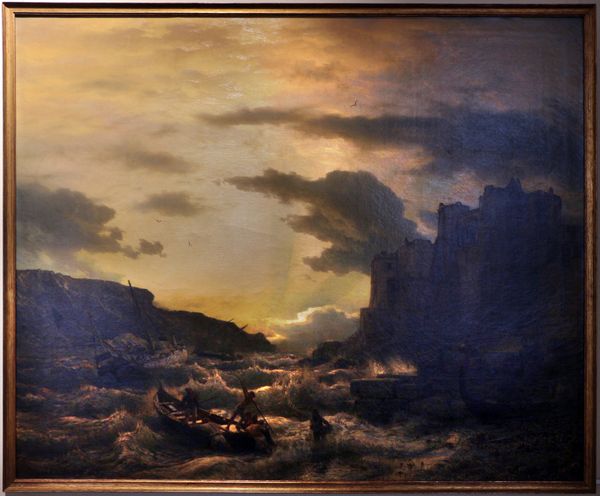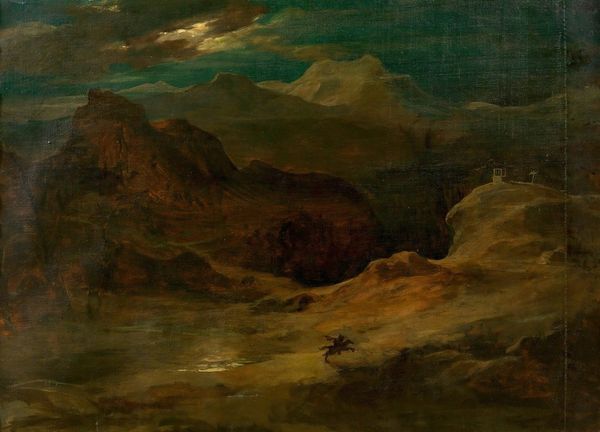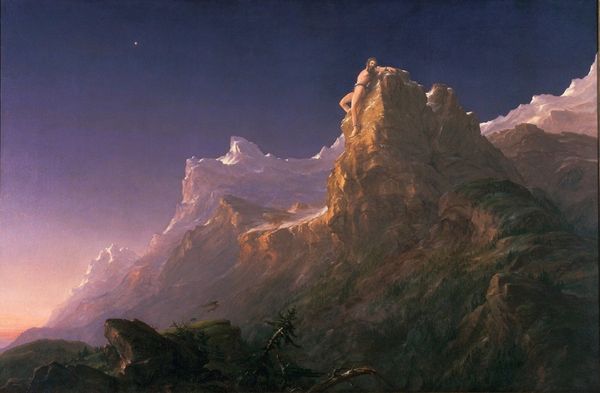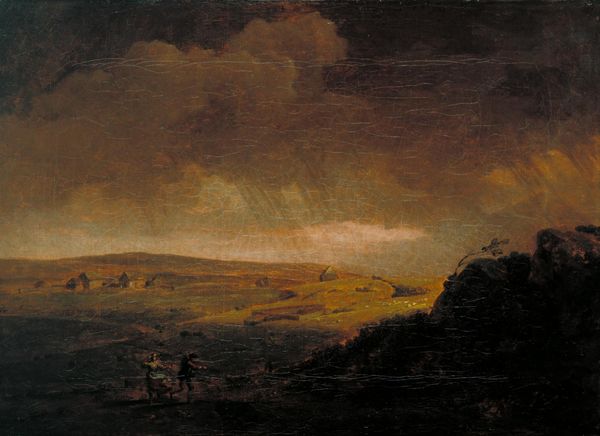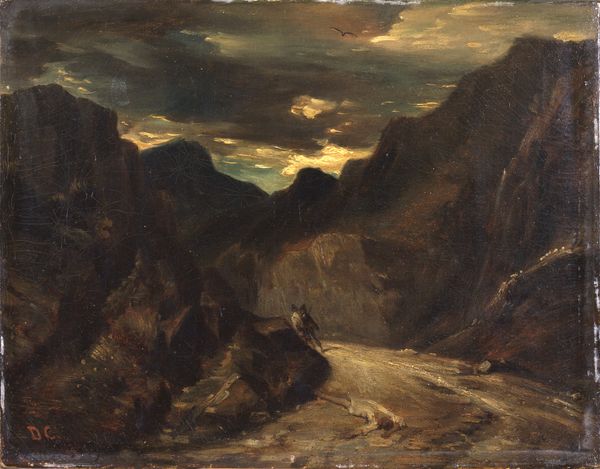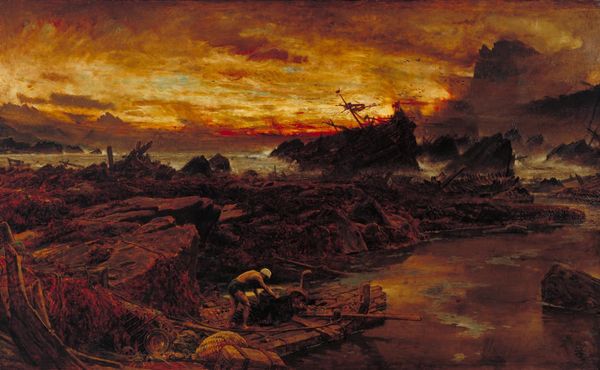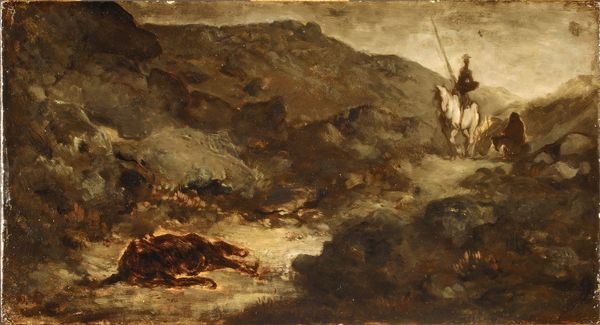
oil-paint
#
narrative-art
#
oil-paint
#
landscape
#
figuration
#
romanticism
#
history-painting
Copyright: Public Domain: Artvee
Thomas Cole painted "The Pilgrim of the World at the End of His Journey" in the United States sometime before his death in 1848. The painting uses oil on canvas to portray a lone pilgrim at the edge of a dark, rocky landscape, suggesting the end of life's journey. Cole, as a leading figure of the Hudson River School, often infused his landscapes with moral and allegorical content. This work reflects the cultural and religious sentiments prevalent in 19th-century America, particularly the theme of life as a pilgrimage, influenced by Protestant beliefs. The rugged, sublime landscape serves as a metaphor for the challenges and spiritual trials of human existence. The Hudson River School also reflects the emerging American identity and its relationship to the land. To fully understand Cole’s art, one might consult period literature, sermons, and travel accounts to appreciate the cultural values and intellectual debates that shaped his artistic vision. Art historians look to such sources to uncover the social and institutional contexts that gave meaning to art.
Comments
No comments
Be the first to comment and join the conversation on the ultimate creative platform.


